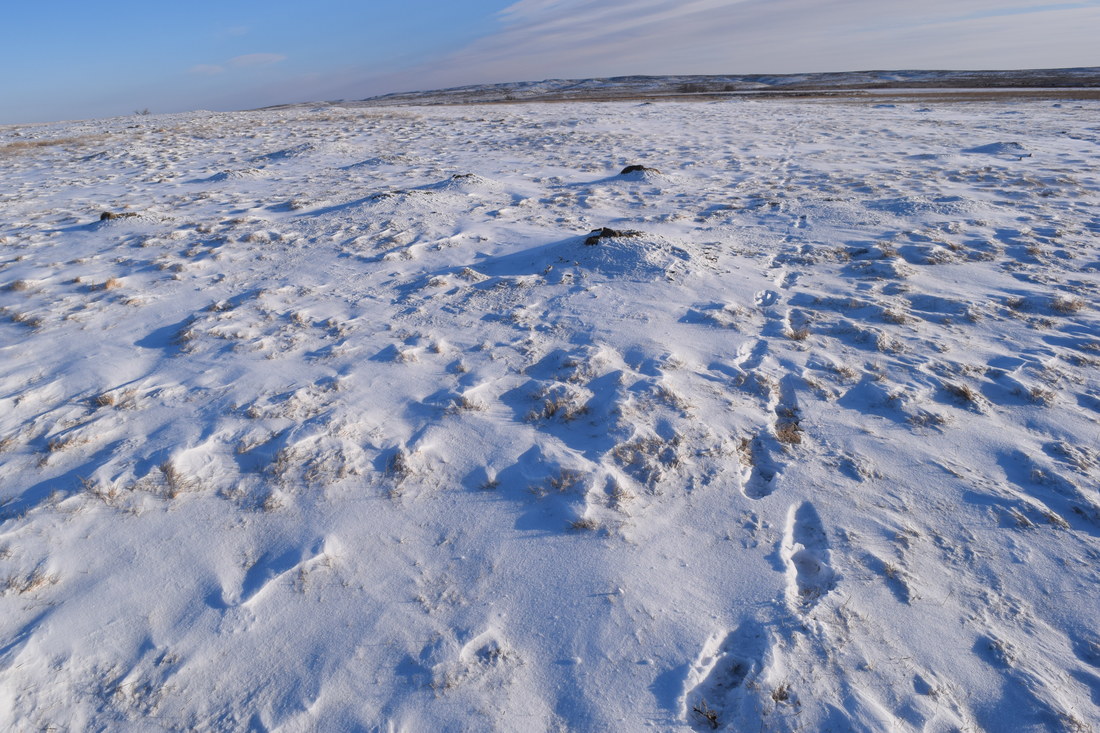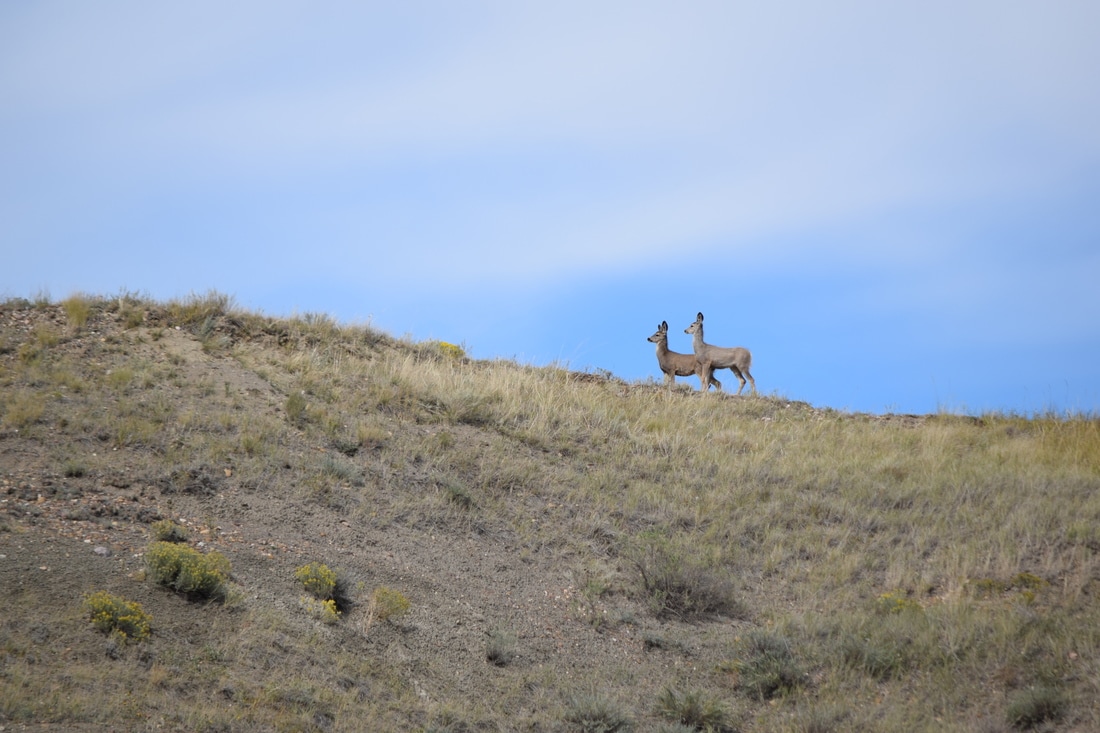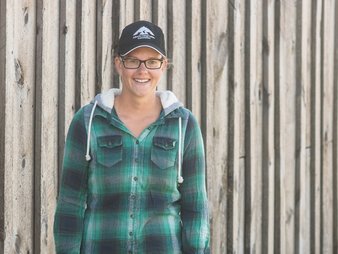By Sandy Van Dijk
The last transect I walked was the final transect for the Landmark Project managed by Adventure Scientists on American Prairie Reserve in northeastern Montana. The day was December 13, 2016, the walk was about 9.5 miles, the temperature was near 0°F, the wind was blowing, and the sky was blue with wispy, white clouds. I stopped at the end of the transect, looked back at my footprints in the snow, snapped a picture and took a quick moment to be grateful for the herd of 180 pronghorn, the flock of 75 sage grouse, and the smaller groups of mule deer, white-tailed deer and sharp-tailed grouse we’d seen that day. Then the pain in my toes and fingers reminded me that I was half frozen, so I climbed in the 4Runner and we headed back to the Enrico Center.
That transect held the most wildlife I had seen in one day on the prairie. Apart from that, the hike was a typical one for December. What differed between a transect in September and one in December was the weather, how many layers we wore, the types of wildlife we saw, and my own appreciation for wildlife.
When I first arrived on the prairie, I took a lot of wildlife for granted, such as mule deer and red-tailed hawks, considering I would see them on a weekly basis where I’m from in Alberta, Canada. The animals I didn’t take for granted were those that rely strictly on prairie habitat to survive. This included sage grouse, burrowing owls and ferruginous hawks, which are endangered in Alberta, and prairie falcons and prairie rattlesnakes, which are both species of special concern in Alberta*.
What I came to learn during my stint on the prairie while hiking hundreds of miles and recording dozens of wildlife observations was that each individual sighting of wildlife is special, unique, and worth it. I might have walked 10 miles — through a mile of gumbo (prairie mud) which weighed my boots down, across three creeks, over cacti stabbing my feet, and greasewood ripping my clothes — and seen one mule deer. And that one mule deer became very important to me, because I was exhausted, my legs felt like jelly, I was starving and I was thirsty, but I had worked so hard to see one deer. I learned to value each wildlife observation, and then I learned to cherish watching the animals. After working that hard to see a single mule deer, I would stand and watch the deer, how it gracefully pronked across the prairie, avoiding cacti spines, greasewood thorns, prairie dog burrows and other obstacles with ease, until it was out of sight behind the sagebrush. It didn’t matter if that mule deer was a golden eagle, pronghorn, coyote, burrowing owl or garter snake. I discovered that all wildlife is equally important and valuable, and that I want everyone at any time to be able to access and see these wildlife in a natural habitat. They all deserve every effort we can give them to ensure they survive and flourish well into the future, despite any odds against them.
I thank the prairie for teaching that lesson to a degree that no professor or book could ever instill in me.
Sandy Van Dijk spent three months on the American Prairie Reserve as part of the final crew for the Landmark Project.
*Alberta Environment and Parks. 2016. Species at Risk. Retrieved from https://aep.alberta.ca/fish-wildlife/species-at-risk/default.aspx



